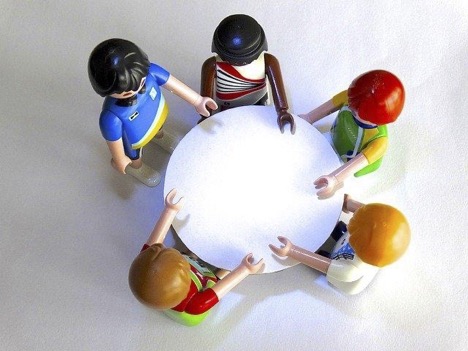We all have different personalities, different ways of working, and different communication styles. This can really enrich the collaboration between colleagues and it doesn’t necessarily need to be a cause of irritation or frustration, but sometimes it can be. What to do when you feel the tension inside you build up with every meeting or one-to-one? Do you let it complicate the collaboration or do you take action? And how do you take action?

Start within yourself
I’ve experienced firsthand how tension can quickly build up when there seems to be a mismatch between different ways of working. Especially when these feelings of tension remain unaddressed.
During meetings with a new colleague, ambitious, driven, and with continuous improvement deeply imprinted into his DNA, I could feel the tension building up inside me. But I could not quite pinpoint where this tension was coming from.
At a certain point, I had to hand over some tasks to this colleague during my holidays and after coming back, during the debriefing, it felt like nothing we had discussed earlier was left. The approach had been changed and all my previous work seemed to have gone to the bin.
For me, this felt as if nothing I had done was good enough and nothing I was ever going to do would ever be good enough.
Frustration and tension were building up with every meeting and I could feel that the behaviour of my new colleague triggered something within me. Working together became more difficult and strenuous for me and I knew I had to take action. I had already gained a lot of experience with perfectionism and what it can do to teamwork, so I knew there was no time to waste.
I decided to engage in an honest and respectful conversation with my colleague where I explained how I experienced our collaboration. This discussion wasn’t about blaming, on the contrary. It was about me voicing how I experienced my colleague’s way of communicating and working.
My colleague really had the best intentions. He was even impressed by my capabilities which he had witnessed during one of my training sessions. However, it was in his DNA to always question everything in order to move forward in a better way. He was unaware of how his constant drive for change was perceived by others and how it could make other people feel. By engaging in this conversation, he became aware of this blind spot. Because it was definitely never his intention to make anyone feel ‘not good enough’.
By respectfully expressing what certain behaviours from him triggered within me, we created openness and room for better understanding and empathy. This open conversation allowed us to name the elephant in the room. We both had the choice to act or not. Needless to say, this very much improved our collaboration and we can now respectfully point out when we go back to our old behaviour without realising it. We have come to accept each other’s different styles and that has only contributed to a very positive and agreeable collaboration and lots of great informal moments. Since we are in several ways complementary, we can learn a lot from each other, which is very enriching.
Nonviolent Communication
Of course, sometimes it can feel difficult to engage in this open conversation. There might be hierarchy in play, you might feel a bit overwhelmed, and you may not know where to start.
Discussing with your peers how they experience the collaboration, how they feel and how they addressed the matter can already help you on your way. Nonviolent Communication (NVC) can also be a very helpful tool.
Nonviolent communication is about empathy and speaking openly and honestly.
However, to be able to understand and empathise with your colleagues, partners, … you need to have self-empathy first. Start from your own needs (e.g. appreciation, encouragement, …), look at what the context triggers within yourself, and name it.
NVC is not a tool to end disagreements or solve conflicts, it is a tool to increase empathy and consequently improve the quality of collaboration.
It can help you start that conversation and work together on a better understanding of each other’s needs. This will only improve the way you work together.
Conclusion
Do try to address the issue if you feel your tension is building up. Don’t let it grow out of proportion and seek help if you are struggling to start the discussion.
When you invest in that conversation and start with your own needs, name what it triggers within you, and avoid blaming, you will definitely have given yourself the opportunity to move forward, regardless of the outcome of the discussion.Start within yourself to engage in an open, respectful dialogue and feel the tension subside!


